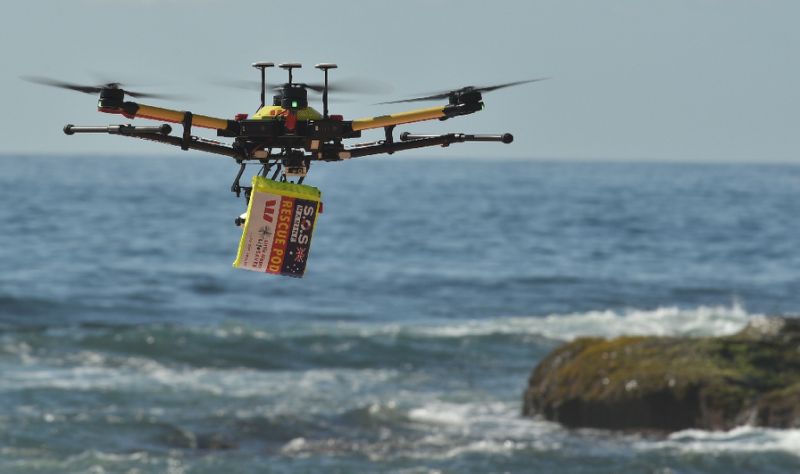Drone in Australia saved the first drowning

Such UAVs with inflatable liferafts serve in the coastal waters of Australia. Their task is not only to rescue drowning people, but also to notice marine predators in advance, sending an alarm signal to the shore
Australia became one of the first countries in the world where coastal rescue services began to introduce unmanned aerial vehicles. Currently, the coast patrolled dozens of UAVs. Rescue robots have two main tasks:
- Detection of drowning people in the water and dropping an inflatable life raft;
- Detection of predators that threaten human life.
A few days ago, one of the UAVs discovered two boys far from the shore - and valiantly fulfilled his mission, dropping a liferaft to them. Apparently, these two Australians were the first swimmers in the world who saved flying robots, reports AFP .
The event took place at the beach of the village of Lennox Head in the state of New South Wales in the south-east of Australia.
In fairness it should be noted that the drone did not find the drowning men himself, but with the help of beachers on the shore. They were the ones who raised the alarm and informed the rescuers. In turn, they transmitted information to the drone operator - and after a few moments, the device flew in the indicated direction.
“I managed to launch it, fly to the site and drop the container - all this within one or two minutes,” said the head of the rescue service, Jai Sheridan, in an interview with the local publication Gold Coast Bulletin .

Engineering department of coastal rescue service. You can consider the equipment mounted on the drone
The advantage of using drones precisely in the speed of response to emergency situations. Rescuers would have taken several minutes more than the drone to get to the drowning. It could cost them their lives.
Of course, living rescuers can pull a person out of the water and provide him with first aid, which drones cannot do. On the other hand, one does not interfere with the other. Following the drone, which dumps an inflatable liferaft, rescue people can quickly get out.
In this case, the situation ended well. Both boys used the help and sailed to the shore on a raft. Video from the drone shows that the boys first looked up at the drone, and then sailed to the fallen rescue raft. They safely reached the earth, their health was in no way injured.
The second task of the Australian drones (perhaps it is even more important task) - the detection of various predators near the beach, such as sharks and jellyfish. Jellyfish are no less dangerous than sharks, so in this sense they can be regarded as predators: for some of the jellyfish, the dome size is more than a meter in diameter, and their mass reaches several centners.

The tentacles of jellyfish reach several tens of meters and contain cnidocysts, a specific intracellular organelle that ensures the defeat of an enemy or a food object. Cnidocysts with toxic content specifically designed for hunting and protection from enemies.
So, software has been developed for Australian drones through the training of a neural network. Having trained on thousands of images taken from the air, the drone program effectively recognizes various objects in the ocean. In particular, the algorithms recognize sharks with an accuracy of 90%, while people cope with this task in such conditions with an indicator of 16%.
On Australian beaches, special barrage nets are usually set up against sharks, but environmentalists opposed this, because barrage nets violate the marine ecology and do not provide additional reliability compared to alternative methods of protection. As a result, last year a government report was issued with a call to abandon the use of barrier networks in favor of alternative methods, such as sonar technology and air patrols. It turns out that drones in Australia not only save human lives, but also protect the environment.
All Articles